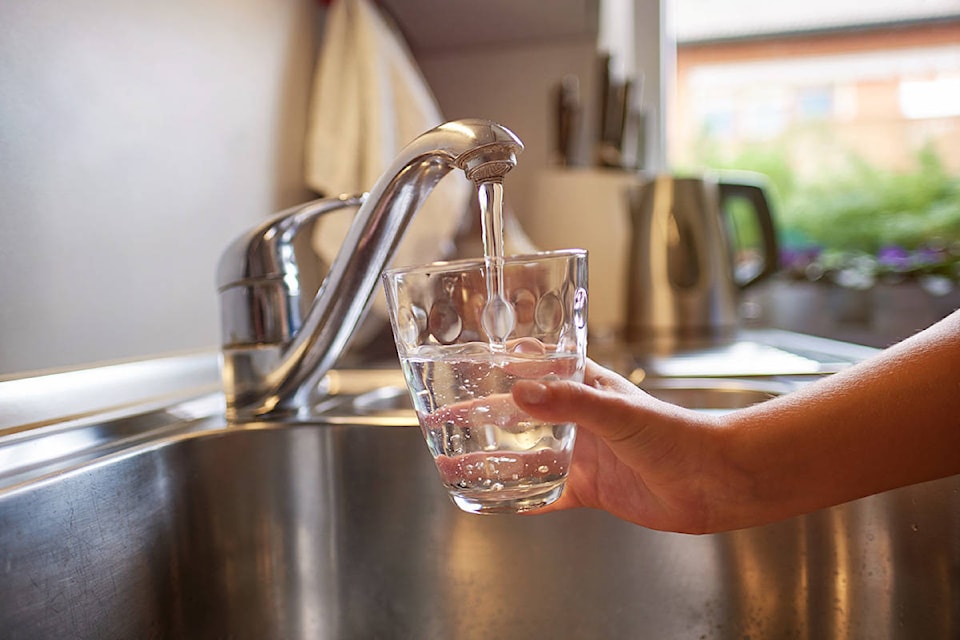Despite stage three water restrictions which came in to effect on June 21, Ladysmith has more than enough water supply to sustain its growing population.
Ladysmith sources water from two main areas, Holland Lake, and Stocking Lake. Holland Lake is the primary source for the town, and Stocking Lake is used as a winter source, as water pulled from Holland Creek becomes too turbid to drink. Water consumption peaks in summer time, and this summer has seen strain to Ladysmith water systems.
A ruptured main at Stocking Lake has placed that source out of commission until repairs are completed. On top of that, unusually low creek flows have forced the Town to release more water from Holland Lake to ensure fish can travel down Holland Creek. Out of an abundance of caution, the Town enforced stage three water restrictions to ensure there is enough water to service Ladysmith residents in the event of a major disaster like a forest fire.
“It’s a complex system, to think about it, it’s kind of a natural system,” director of infrastructure services, Geoff Goodall said. “It relies on the runoff, it relies on rainfall flowing into the creek, and all those sorts of things. If Mother Nature plays with all those systems, we have to be able to respond to what’s happening in the natural system.”
“We’re just being cautious,” he added. “We will reevaluate the water restriction when Stocking Lake main is repaired and up and running. Even though we’re not drawing water from it, once it’s up and running we’ll evaluate the water situation to see if we need to remain on stage three restrictions.”
RELATED: Province calls on Islanders to conserve water immediately
According to the Town’s water data files, 2015 was Ladysmith’s worst recent year for drought. Mayor Aaron Stone said that following 2015’s drought conditions, Town council adopted conservation measures to accommodate a possible multi-year drought.
“You take a lot of factors into account,” Stone said. “Honestly, the biggest factor is making sure there’s enough flows to fight fires… fire flows are important, so making sure you can release enough water to provide if there is something dramatic like a wildfire, but also in local firefighting if there is a structure fire or something. And ensuring we have potable water for peoples’ uses… You always err on the side of caution.”
The Town has capital plans and expansion projects around water systems. Currently, work is being done to complete a water treatment plant by Holland Lake. This project was mandated by the Vancouver Island Health Authority. The new treatment plant will allow the Town to draw water from Holland Creek in the winter time.
There are also plans to expand reservoir capacity at Holland Lake. The capital project will be funded in large part from development cost charges generated by developments like the Holland Creek housing development. The Town has also submitted a grant application to secure funding for the project. After the storage improvements are completed, work will be done to implement a new supply main in Holland Lake that will allow the Town to transport water more easily from Holland Lake without loss of water occurring in transit down Holland Creek.
“The goal with that is to ensure we have more than enough water in drought conditions,” Stone said. “My understanding based on the hydrology work, is [we can supply water for] 18,000 people.”
When the Holland Creek development is fully built out over two decades, it will add roughly 2,000 people. That will result in an increase of 20 percent, about one percent per year. That will bring Ladysmith’s population to roughly 12,000 people by 2040.
RELATED: 2019 on track to be busiest year for waterworks ever in Ladysmith
“The message I have to share is always water is the number one priority. It’s our most precious resource, and it’s our most valuable asset. We know that, and we’re absolutely committed to that as being our number one priority,” Stone said.
Stone said council would not consider adding additional housing to Ladysmith if there was not enough water supply to support the expansion. Town council put direction in the DCC bylaw review to increase DCCs so that every lot that is subdivided in new developments will put money back into water infrastructure improvements. Without expansion and new development in Ladysmith, water infrastructure improvements would be paid for by water parcel taxes, or increasing utility fees.
The Town’s strategy around water is greatly informed by climate change. Measures are being taken to mitigate risks and impacts borne by climate change, however there are multiple factors that influence the severity of climate change, so it is difficult to say exactly what the world will look like decades down the line.
For now, stage three water restrictions remain in place. The Town is working to replace aging water infrastructure and will continue to work on projects that will increase reservoir capacity, and provide a greater quantity of clean water to the people of Ladysmith.
“The number one priority for council and staff is water security, full stop,” Stone said.
